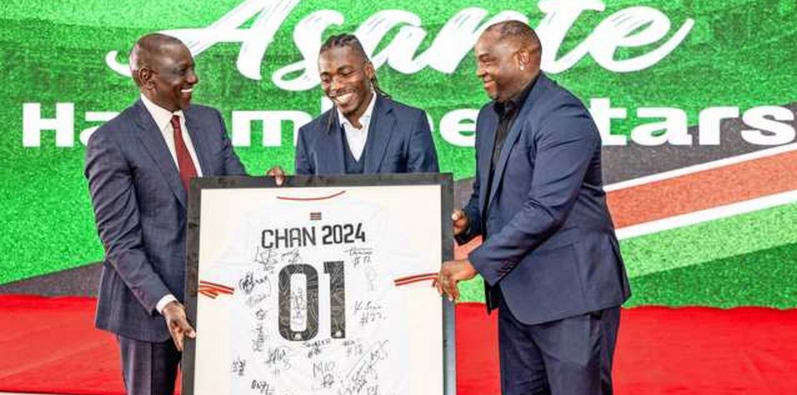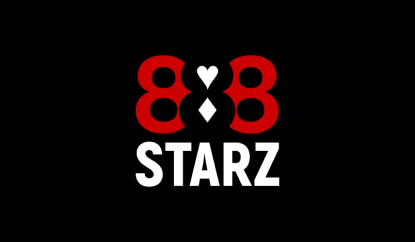There is a new urgency and a renewed sense of identity around Kenyan football, and it is anchored in two intertwined stories, grand plans for stadiums and a fight for a beloved community pitch. At the heart of this moment is Kenyan Football Developments and Infrastructure, a sweeping promise by President William Ruto to build for tomorrow while honoring the people and places that made today possible.
The stage for these announcements was a celebratory luncheon at State House in Nairobi, where Harambee Stars players and officials gathered after Kenya’s stirring run at the African Nations Championship. President William Ruto praised the team’s spirit and challenged Football Kenya Federation and the Ministry of Sports to build a side capable of competing with the best at AFCON 2027, a tournament Kenya will co-host with Uganda and Tanzania.
| CASINO | BONUS | INFO | RATING | |
|---|---|---|---|---|
|
bonus
Deposit KES 147 for up to KES 14,745 bonus + spins!
See 10 Bonuses
|
info
BK 0000683 Industry-leading software providers, over 30 casino games, BCLB license |
|||
|
bonus
Register for up to 31,400 KSH bonus on deposits!
See 12 Bonuses
|
info
No. ALSI-112310012-F15 Unique selection of slots & games |
|||
|
bonus
New players get 50 free spins and a Ksh 2500 freebet!
See 7 Bonuses
|
info
BK 0000665 PG 0000405 Good combination of online casino and betting platform |
The Baba Dogo test of ownership and memory
If policy is the plan, then Baba Dogo Grounds is the heart. The modest community field in Ruaraka has become a symbol of both the promise and the pressure facing Kenyan football, with the ground caught in an ownership dispute between the community and Panafric Industries. President Ruto has publicly sided with the community, and he went a step further by promising to immortalize Gor Mahia playmaker Austine Odhiambo, the hometown star who has stood up for the field where he once honed his craft.
Ruto, speaking in a jovial exchange with the Harambee Stars African Nations Championship squad, gave a clear directive that tied policy to place. He said, “I have directed the Cabinet Secretary to look for money for the upgrading of Baba Dogo, and then we will inscribe the name ‘Austine’ in it.” It was a statement that blended infrastructure with identity, a recognition that the soul of the sport lives where children first lace up.
Odhiambo and the ground that raised him
Odhiambo has been among the most vocal defenders of Baba Dogo, raising the issue directly with the President multiple times. He has argued that the grounds belong to the community, a view shared by residents who say they have used the field long before Panafric’s arrival. The legal picture is complicated, Panafric is backed by a court order asserting ownership, yet the public outcry, and the President’s intervention, have re-opened the gates for local kids to return to play.
July brought the tensions to a head. With police backing, Panafric reportedly moved to eject traders, uprooted the goalposts, and began building a perimeter wall. In response, during a visit to the wider Embakassi area, President Ruto declared the grounds belonged to the community and ordered police to leave the site. Since that intervention, children from the larger Ruaraka constituency have resumed using the field, a small victory that carries an outsized emotional weight for a neighborhood that sees its future in that patch of grass. The plan to upgrade Baba Dogo and inscribe Austine is now a litmus test for how national promises translate to local realities.
AFCON 2027 and the 25 stadiums pledge
From a single community ground to a national map of venues, the scale of ambition is unmistakable. President Ruto announced plans to construct 25 new stadiums across the country in time for AFCON 2027. He noted that a stadium in Bungoma is nearing completion and another in Kitui is underway, placing the first markers on a wider blueprint meant to lift infrastructure standards and match the aspirations of a co-hosting nation.
The message to the football ecosystem was firm and forward leaning. Ruto said the stadia must be ready in time for the tournament, and he linked the construction drive to a larger vision for competitiveness. He emphasized the need to work with private sector partners, including banks and betting firms, to pool resources and to ensure that sport remains a unifying force that reflects the country’s collective pride. The promise carried both urgency and accountability, a call that the building blocks for success must be laid now.
Grassroots first and the role of partners
The President’s directive to football administrators was unmistakable. “You have my instructions and marching orders to build a solid, professional team that will make us win AFCON in 2027,” he said to officials, reinforcing the point that facilities alone will not deliver results without a pipeline. That pipeline, he argued, begins at the base of the pyramid, with structured training and opportunities in every region.
To that end, the government has launched 37 constituency sports academies, designed to give young talents access to coaching, mentorship, and a pathway to elite performance. Ruto also highlighted the Talanta Hela Initiative, a program that has helped youths monetize their skills and explore careers in sport. On governance, he disclosed that the Sports Policy of 2005 and the Sports Act of 2013 are under review, the reforms are intended to build a transparent and commercially viable sports ecosystem that addresses athlete welfare, doping control, and the integration of modern technology. The message was consistent, stronger systems and stronger partners can underpin sustained success.
CHAN lessons and the belief to build on
Kenya’s performance at the 2024 African Nations Championship provided the emotional spark for this policy wave. Making their first appearance at the tournament for home-based players, Harambee Stars reached the quarter-finals, falling 4 to 3 on penalties to Madagascar after a 1 to 1 draw at the Moi International Sports Centre Kasarani. The run was full of nerve and resolve, Kenya topped Group A after beating Morocco, the Democratic Republic of Congo, and Zambia by identical 1 to 0 scores, and drawing 1 to 1 with Angola.
There was adversity too. Remarkably, Stars played more than an hour with 10 men against both Morocco and Angola following red cards to midfielders Marvine Nabwire and Chrispine Erambo. The margins were thin, and the experience was clarifying, providing a competitive benchmark for what an elite Kenyan team can look like, disciplined, organized, and mentally tough under pressure. In the eyes of supporters, that journey rekindled belief and put the word unity back at the center of the national football conversation.
President Ruto’s words mirrored that sentiment. “As we set our sights on 2027 Afcon, we must draw on the resilience and belief that carried us this far to prove once again that Kenya can stand tall among the very best in Africa and the world.” He added that the process of raising the team begins now, from the grassroots, and he asked the private sector to join in. With more than a year before the continental showpiece kicks off, he argued that Kenya has enough time to prepare properly.
Coaching leadership and institutional alignment
The CHAN campaign was guided by South African legend Benni McCarthy, a seasoned figure whose presence underlined the seriousness of Kenya’s intent at the tournament. The directive that followed was institutional, President Ruto tasked FKF and the Ministry of Sports with charting a clear path to 2027. That path is expected to include talent identification, exposure to high level competition, and a coherent calendar that turns promise into performance.
The afternoon at State House brought the main actors into the same room, Sports Cabinet Secretary Salim Mvurya, FKF president Hussein Mohammed, and club officials. The symbolism mattered, the people who shape policy, run competitions, and coach players heard the same challenge. The next steps will depend on how quickly these stakeholders align around timelines and deliverables, and how effectively they connect local academies to senior national team needs.
Player welfare and the recalibrated housing pledge
There was also a practical update on rewards for the CHAN team. Harambee Stars players who had been promised free houses will now receive an offer under the affordable housing scheme, with two bedroom units valued at KSh 2 million. The government will cover KSh 1 million, and players will settle the balance through long term mortgages that could stretch up to 20 years, with monthly payments starting as low as KSh 2,000. The reward will not be converted to cash, and players may choose units in towns such as Nairobi, Mombasa, or Kisumu, a structure that aims to tie benefits to a tangible asset and to long term security.
The framing here is notable. By positioning the housing support within an existing national program, the government signaled a preference for predictable frameworks over ad hoc one offs. For players, the offer provides a clear pathway to home ownership, and for the public, it sets an example of benefits that are measurable and spread over time. In a broader sense, it aligns with the theme of building, both in the sense of facilities and in the sense of livelihoods beyond the pitch. The equilibrium between immediate reward and lasting structure is a theme the football community will watch closely, alongside the delivery of stadia.
What success could look like
Success for Kenya’s football project would be visible and felt in several layers. At the base, community grounds like Baba Dogo would be protected and improved, places where children can safely play and where local heroes are celebrated by name. In the middle, academies would become reliable pipelines, with clear coaching standards, medical support, and education that prepares teenagers for both professional sport and life beyond it.
At the top, national stadiums and training centers would meet modern standards, giving Harambee Stars and local clubs facilities that match their ambitions. The link between all three layers is the credibility of delivery, how quickly the pledges translate into construction, how consistently the academies identify and nurture talent, and how transparently the reforms in governance and integrity are implemented. If Kenya can align these pieces, the promise of co-hosting AFCON 2027 can become a springboard for a decade of growth rather than a single peak.
What to watch next
- Progress on the upgrade of Baba Dogo Grounds and the resolution of the dispute around community access,
- Timelines and transparent procurement for the 25 stadia program, including clear milestones for venues already underway in Bungoma and Kitui,
- Activation of constituency sports academies and the FKF plan for scouting, camps, and competition exposure ahead of AFCON 2027.
The soul of the project
In the end, the success of Kenya’s grand plans will be measured as much by feelings as by facts. It will be seen in the pride of a young girl running out at a refurbished community ground, in the applause when a local boy sees his hero’s name on a stand, and in the confidence of a national team that knows it has been prepared with care. Baba Dogo is more than a story about a fence and a field, it is a reminder that football belongs to the people, and that the best infrastructure plan is one that keeps communities at its core.
President Ruto’s pledges have set a high bar. The promise of 25 new stadiums, the launch of 37 constituency academies, and the reform of sports governance present a rare window to reshape the game. The CHAN experience showed what is possible when Kenyans pull together, and the AFCON 2027 target offers a clear horizon. If that energy reaches every training ground and every boardroom, Kenya can build not just facilities, but a football culture that endures. In that vision, the upgraded Baba Dogo, with the name Austine etched into its story, becomes both a beginning and a beacon.
“Because we were hosting continental tournament for the first time in 40 years, it is understandable that we may not have been as ready as we should have been. But now that we have time, we must prepare for Afcon properly.”
That reflection, grounded in humility and resolve, is a fitting credo for the work ahead. Kenya’s football future will be written in bricks and grass, in classrooms and training pitches, and in the everyday choices that protect community spaces while elevating national ambitions. The task is big, the mood is buoyant, and the road to 2027 is open.









